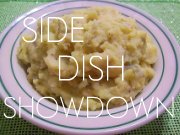I never thought I would ever make this post, but this is what happens when you have a whimsical omnivore as a Husband. Last week when he was going out to the fish shop I also tagged along to buy a new sunscreen with more SPF for my swimming sessions. The market is very close to our house so we decided to walk. Once reaching there I headed straight to the second floor to buy my things. When I came downstairs saw him smiling mischievously. After being married to him for 3 and half years I know him enough to guess that there was some surprise…but this time it wasn’t pleasant enough. He bought 1 kg of clams and wanted me to cook. Now come on I know I like to cook but that does not mean I can whip up anything and everything under the sun and specially things that I have, no not only me but my whole family have not seen before. So after a lot of grumbling and cursing I sat down to google as I needed to know how to clean them first. But another surprise was there for me in store. Once I cleaned and shelled, the whole 1 kg of clams turned into as little as a handful of meat. Seeing that I decided to add some vegetable and when it comes to veggies nothing is like the generous potato to soak up all the aroma and spices. It was a quick dish as I cooked it mainly with the left over sambal from previous day’s Mee Goreng. Hubby and his friends liked it a lot and now he is planning to bring it again this weekend. So that was my brief encounter with clams and here is how I made it.
Just got this information on Clams.They are very nutritious and has a right balance of high protein, low carbohydrate. Source: Blurtit.com
Nutritional Value: One pound of clams, after the shell has been removed is about 68g
Following are the nutrients clams have:
1. Which yields 50 calories,
2. 8.6 g protein,
3. 31 mg calcium,
4. 213 mg potassium
5. 9.5 g iron.
6. 10.8 mcg folate,
7. 33.6 mcg vitamin B-6,
8. 204 IU vitamin A
Just got this information on Clams.They are very nutritious and has a right balance of high protein, low carbohydrate. Source: Blurtit.com
Nutritional Value: One pound of clams, after the shell has been removed is about 68g
Following are the nutrients clams have:
1. Which yields 50 calories,
2. 8.6 g protein,
3. 31 mg calcium,
4. 213 mg potassium
5. 9.5 g iron.
6. 10.8 mcg folate,
7. 33.6 mcg vitamin B-6,
8. 204 IU vitamin A
Ingredients:
Clams: 1 kg (when shelled it yields very little, check the picture that is what the whole quantity is that too with potato.)
Potato: 1 medium
Onion: 1 small
Tomato puree: 1 tbsp
Oil: 2 bsp
Coconut milk: ¼ cup
Chilli powder: ½ tsp
Salt
Method:
First run the clams under running water while doing this check if any of it has open shells. Gently tap on the shells, if its live will instantly close the shells…otherwise discard.
Now bring one big pot of water to boil with a pinch of salt. Pour the clams in it. Boil for 5 minutes. Drain water. Again follow the same rule if any of the clam fail to open discard it immediately as that might have died long ago.
With a small knife take out the meat from the shells. Repeat with the rest and again wash under running water. Keep aside.
While the clams are boiling peel and cut the potato in small cubes. Wash and keep aside. Make paste of the onion and keep aside.
Heat a pan with the oil. Add the cubed potato pieces and fry for a couple of minute with salt.
Add the onion paste and fry on low till the raw smell is gone and oil separates at the sides.
Add the tomato puree and fry briefly for a minute or so immediately put the sambal paste and chilli powder. Fry on low till again oil comes out.
Now mix in the boiled clams and again fry for 2 minutes. Adjust seasoning.
Pour the coconut milk (keep the flame at very low or the milk will curdle). Stir in everything together. Cover and let it simmer on low.
Once the gravy is dry and the potato and clams is cooked, check the seasoning and serve hot with lime wedge.
My omnivore ate it with Chinese style fried rice for dinner and immensely enjoyed it. though I was a little scared in the beginning but now I am having new ideas to cook it.He suggests that it has a similar texture of mushrooms or soy nuggets. so next time will cook some with soy for myself too.
Vegetarian Option: use button mushrooms or soaked soy nuggets. adjust the seasoning as per your liking.
My omnivore ate it with Chinese style fried rice for dinner and immensely enjoyed it. though I was a little scared in the beginning but now I am having new ideas to cook it.He suggests that it has a similar texture of mushrooms or soy nuggets. so next time will cook some with soy for myself too.
Vegetarian Option: use button mushrooms or soaked soy nuggets. adjust the seasoning as per your liking.
Tags:
Clams, shellfish, Sambal, clam sambal, coconut milk, potato, spicy gravy, red chilli sauce, potato chilli, Malaysian, sambal shellfish, tomato chilli, spicy clams, shelled clams, clams potato.









































